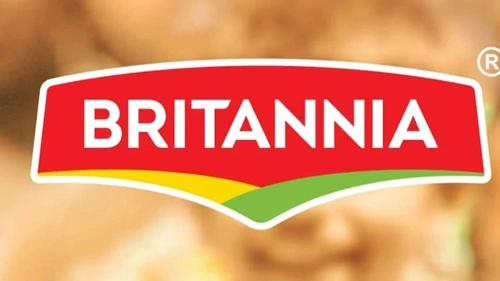Britannia Industries Limited, a leading Indian FMCG company renowned for its ‘Jim Jam’ and ‘NutriChoice’ biscuits, reported a 5% year-on-year increase in consolidated net profit, reaching ₹582 crore for the quarter ending December 31, 2024. This growth was primarily driven by strategic price hikes implemented to counter rising costs of key commodities like palm oil, cocoa, and sugar. The company’s revenue for the quarter rose by 8% to ₹4,593 crore. However, total expenses also increased by 9% to ₹3,875 crore, reflecting the impact of higher input costs.
In line with its sustainability vision, Britannia has committed to minimizing the environmental footprint of its operations and enhancing the goodness in the food value chain. The company has developed a strategic framework resting on four core pillars: Governance, People, Resources, and Growth. Notably, Britannia aims to achieve 28% power consumption from renewable sources by 2024 and targets 57% by 2026. Additionally, the company is focusing on diversity and inclusion, with goals to reach 50% gender diversity in its factory workforce by 2027.
Britannia’s strategic emphasis on expanding its distribution network in rural areas and Hindi-speaking regions is expected to benefit the company. Its diverse branded product portfolio and consistent innovation remain critical drivers of its performance. Although rising commodity prices remain a concern, the company’s ability to balance volume growth with pricing strategy, optimize its distribution network, and navigate challenging environments should drive profitability in the quarters to come.
Overall, Britannia’s strategic initiatives in sustainability, market expansion, and innovation position it well for future growth, despite facing challenges from rising input costs and competitive pressures and here on this page we will discuss in-depth about SWOT Analysis of Britannia Industries.
Strengths
- Robust Brand Portfolio: Britannia boasts a diverse array of well-established brands, including Good Day, Marie Gold, and NutriChoice, which enjoy high consumer trust and loyalty. This strong brand equity facilitates market penetration and sustains competitive advantage.
- Extensive Distribution Network: The company has developed a comprehensive distribution system, ensuring its products are available across urban and rural markets. This widespread reach enables Britannia to cater to a diverse consumer base effectively.
- Commitment to Innovation: Britannia has consistently introduced new products and variants, aligning with evolving consumer preferences. This focus on innovation has helped the company maintain its market relevance and drive growth.
- Sustainability Initiatives: The company has embarked on a transformation journey driven by strategic initiatives, operational enhancements, and technological advancements. Key initiatives include entering new categories, launching new-to-market innovations, and leveraging digitalization to strengthen distribution and enhance marketing efforts.

Weaknesses
- Profit Margin Pressures: Despite revenue growth, Britannia has faced challenges in maintaining profit margins. In Q2 FY2024-25, the company reported a nearly 10% decline in consolidated net profit to ₹5.31 billion, missing analyst expectations. This decline was attributed to weaker urban consumer demand amid high inflation and increased expenses due to higher prices of ingredients like wheat and cocoa.
- Intensifying Competition: The FMCG sector in India is highly competitive, with both established players and new entrants vying for market share. Britannia faces significant competition from smaller regional rivals offering cheaper alternatives, which can lead to pricing pressures and necessitate increased marketing expenditures.
- Dependence on Key Markets: While Britannia has a strong presence in India, its international operations are relatively limited. This concentration exposes the company to domestic economic fluctuations and regulatory changes, underscoring the need for diversification.
Opportunities
- Expansion into Emerging Markets: Britannia can explore untapped markets, both domestically and internationally, to drive growth. Expanding its footprint in emerging economies can open new revenue streams and enhance brand recognition.
- Product Innovation and Diversification: Investing in research and development to introduce new products that cater to evolving consumer preferences, such as health-focused and premium items, can strengthen Britannia’s market position. Diversifying the product portfolio can also reduce dependency on existing categories.
- Leveraging Digital Platforms: Embracing digital marketing and e-commerce can enhance customer engagement and accessibility. With the rise of online shopping, establishing a robust digital presence is essential for reaching a wider audience.
Threats
- Raw Material Price Volatility: Fluctuations in the prices of key raw materials, such as wheat and cocoa, can impact production costs and profit margins. Managing these costs is crucial to maintaining competitive pricing.
- Regulatory Challenges: Changes in food safety regulations and taxation policies can impact operations. Staying compliant with evolving standards requires continuous monitoring and adaptation.
- Economic Uncertainties: Global economic downturns or domestic economic challenges, such as inflation and policy changes, can affect consumer spending on discretionary items like premium baked goods, impacting sales.
Conclusion
In 2025, Britannia Industries continues to leverage its strong brand portfolio, extensive distribution network, and commitment to innovation to maintain its position in the FMCG sector. However, challenges such as profit margin pressures, intensifying competition, and dependence on key markets necessitate strategic responses. By focusing on opportunities like expanding into emerging markets, product innovation, and leveraging digital platforms, Britannia can strengthen its position and continue to drive growth in the evolving global food industry.
Anantha Nageswaran is the chief editor and writer at TheBusinessBlaze.com. He specialises in business, finance, insurance, loan investment topics. With a strong background in business-finance and a passion for demystifying complex concepts, Anantha brings a unique perspective to his writing.


